Watching The Warming
With Lorin R. Robinson
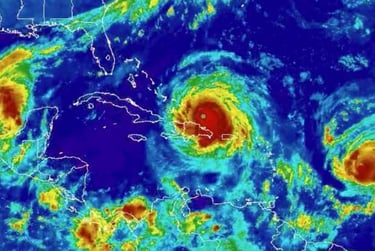

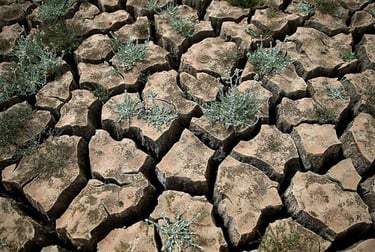

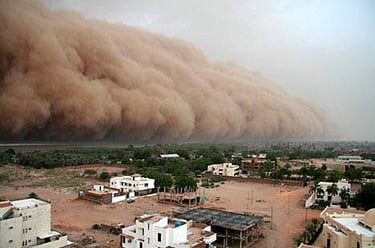

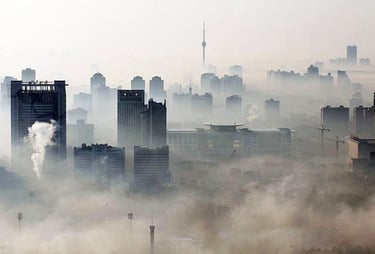

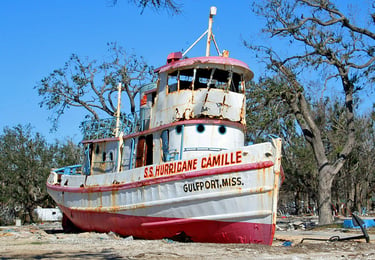


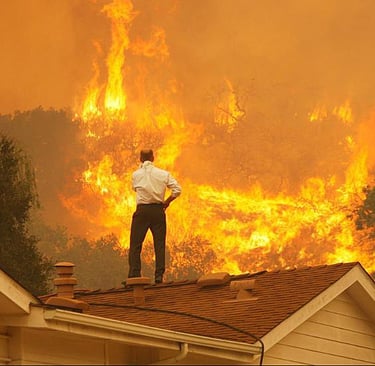
Herein you'll find news of The Warming curated and analyzed to emphasize the need for people and institutions to begin preparing for the impact of the climate crisis. It's my belief that The Warming will crack, blister and peel away what has always been our thin layer of civilization leading to the eventual demise of civil society and the collapse of major institutions. The time has come to focus on how to adapt in order to cope with the coming world of The Warming.
For a detailed discussion about preparing for The Warming, click here to be taken to the website describing my book Surviving The Warming: Strategies for Americans:
https://www.survivingthewarming.com
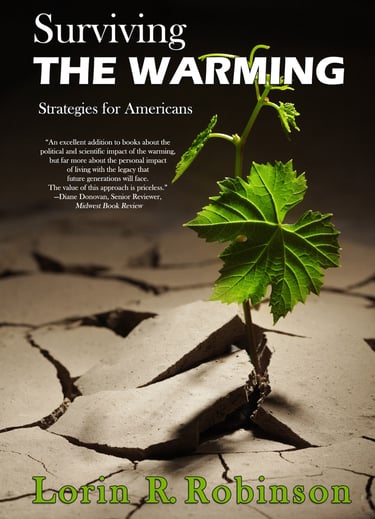

The One Book to Read about Preparing for the Climate Crisis
Author Bio
Dr. Lorin Robinson is a journalist and journalism educator who also served as a communications manager with a Fortune 100 company. He has BS and MS Degrees in Journalism from Northwestern University and a Ph.D. in Organizational Communications from the University of Minnesota. You can contact me below:
Podcast: Adaptive Strategies for Confronting The Warming
In this 30-minute Podcast, Lorin Robinson joins Mark and Joe ("Mark and Joe on the Radio") to discuss strategies for dealing with the inevitable disruption caused by the warming. His book, Surviving The Warming--Strategies for Americans, provides a detailed look at the potential impact of the climate crisis on housing, the economy, family finances, food, water, energy, employment, health, safety and security and the necessary migration of millions over time to escape the increasing heat, rising sea level, flooding and drought....
Find the podcast at: https://www.buzzsprout.com/2150380/episodes/16055622
Mother Earth?
Why do we call the Earth our “mother?” That might make people think “she” cares about us. But does she even know we exist? Does she feel us scraping off layers of her soil, drilling holes deep into her body? Does she know that we are releasing trillions of tons of greenhouse gases into her atmosphere, that we are fouling and acidifying her oceans, burning millions of acres of her forests, sending radioactive mushroom clouds into her skies? Does she know that her temperature has been climbing, her oceans rising, her surface being battered by ferocious storms?
Of course not. If “Mother Earth” were aware, she’d be amused that the slightly annoying vermin infesting her body are in the process of self-destructing, saving her the trouble. But she isn’t aware and doesn’t care. If or when we go, she will take no notice.
If we are to survive, we are on our own. And we will survive only if we heed the lessons of our greedy, hedonistic and destructive past and present.
Fast Track By the Numbers
The figure 425.75 represents the current (August 21) parts per million (PPM) of CO² in the atmosphere. It is significant because climate scientists believe that 350 PPM is the baseline over which we cannot dodge the worst that warming has to offer.
The 2024 figure a year ago was 223.27 PPM; 10 years ago, it was 399.41. Thus, the CO² level has increased 9.4 % over the past decade.
“The measured CO2 levels in the atmosphere serve as the single best, real-time signal of whether the world as a whole is on track to a safe future, or needing to do more to get on track,” according to https://www.co2.earth/daily.org. Unfortunately, efforts to reduce CO²emissions are being offset by the warming itself. Increasing planetary heat is contributing to an increase in wildfires. In 2022, wildfires pumped an estimated 5.3 billion tons of CO² into the atmosphere, accounting for 14 percent of the total that year.
Warmer temperatures are also releasing increasing amounts of CO² and methane from the Arctic and Siberian tundra where they have been locked in ice for several million years.
And overall, despite efforts to the contrary, the global annual total for CO² emissions remains at 35-37+ billion tons and the worldwide use of non-fossil fuels appears to be stuck at around 20 percent of the total energy budget.
All this may be summed up in a simple statement: We are on a fast-track to suffer ever increasing negative effects caused by the warming.
2024's Frightening Scorecard
According to Climate Central:
It’s official: 2024 was the hottest year on record — both globally and for the U.S.
Average global temperatures in 2024 ranked highest in the 145-year record, 1.54°C (2.77°F) above the early industrial (1881-1910) baseline average.
2024 was the hottest year on record for nearly one-third (31% or 76) of 243 U.S. cities analyzed by Climate Central.
The U.S. experienced 27 billion+ dollar weather and climate disasters in 2024 — which are becoming more frequent and intense in response to human-caused warming.
Global analysis conducted by World Weather Attribution (WWA) and Climate Central found that climate change added on average 41 more days of dangerous heat in 2024 and contributed to the deaths of thousands of people and the displacement of millions during extreme weather events last year.
For all the details, click on: https://www.climatecentral.org/climate-matters/2024-global-and-us-review
Elon Musk may be gone, but Trump is still tearing up some of the most important things our government does for us.
An action this week might be among Trump’s most dangerous, particularly for future generations: destroying climate science as we know it. According to the New York Times, Trump’s EPA is preparing to roll back a foundational scientific finding: that climate change and the fossil fuel emissions that cause it are a danger to human life.
Real scientists are nearly unanimous on this fact (97 percent) – but because acting on it would endanger Big Oil profits, Trump’s handpicked political extremists are doing all they can to rewrite the truth.
The Environmental Protection Agency is supposed to protect our environment – not look the other way while polluters make our planet less safe. So, if you think this decision is just some minor bureaucratic maneuver, think again. Here’s more from the Times about what’s at stake here:
“If the Trump administration is able to repeal the endangerment finding, it would not only erase all current limits on greenhouse gas pollution from cars, factories, power plants and other sources. It would prevent future administrations from trying to tackle climate change, with lasting implications.”
It should go without saying but a decision like this should be made by impartial experts, not political appointees with an ideological axe to grind. It could lock in climate inaction not just for one presidential term, but for years – time we simply can't afford to waste.
But handing random operatives the keys to crucial government functions – with devastating human consequences – has sadly become business as usual for this administration. They’ve already gutted lifesaving aid programs like USAID and healthcare for working people like Medicaid – and now they want to take this slash-and-burn agenda to our ability to fight climate change.
Members of Congress – who are back home now for summer recess and will face voters just 16 months from now – need to let us know where they stand. Will they side with Trump and fossil fuel polluters – or with our children and grandchildren who are counting on us to leave them a livable planet? Any lawmaker who refuses to give a clear answer on that question is already telling us all we need to know.
If you’re concerned, please sign this petition:
Trump's Most Dangerous Gambit:
Destroying Climate Science
Hurricane Katrina 20-Year Retrospective
Photos by Lorin Robinson
Hurricane Katrina struck the U.S. in August, 2005. The storm that became Hurricane Katrina was one of the most powerful storms on record with winds in excess of 170 mph.
On August 29, the hurricane struck Louisiana and, later, Mississippi. It caused massive destruction, especially in New Orleans where the levee system failed. By August 30, about 80 percent of the city was underwater. A public-health emergency ensued, and civil disorder was widespread until an effective military presence was established on September 2.
The small coastal town of Pass Christian, MS., was hit by a record 28-foot storm surge that flattened 90 percent of the town’s structures.
Ultimately, the storm and its aftermath caused more than $160 billion in damage and claimed more than 1,800 lives. It was the costliest natural disaster in U.S. history.
The photographs that follow were taken in New Orleans, Biloxi and Pass Christian shortly after the storm.
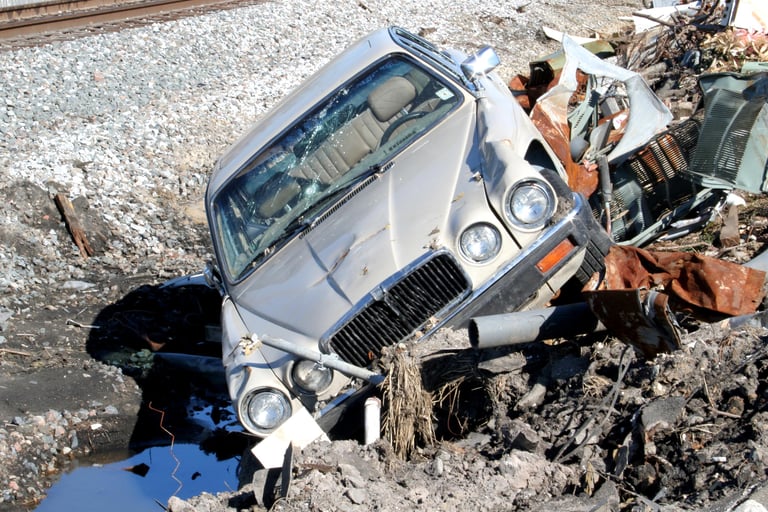



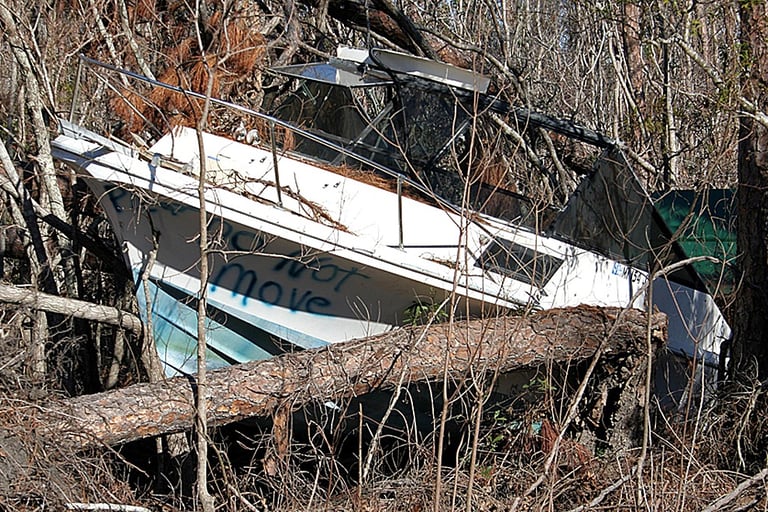

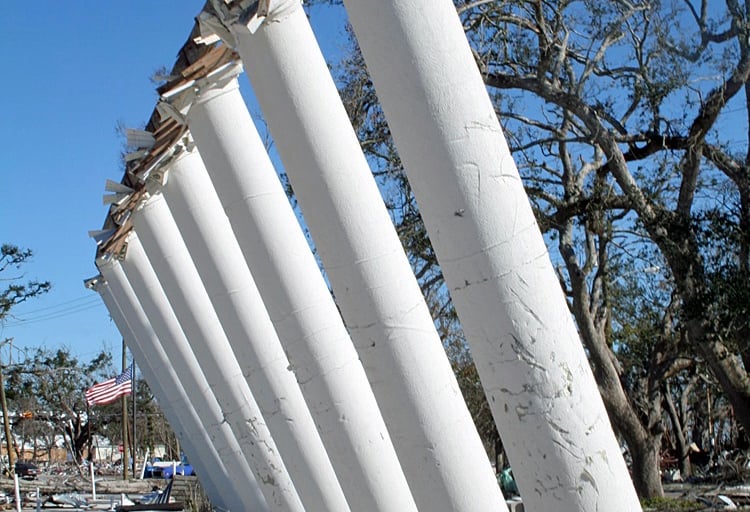



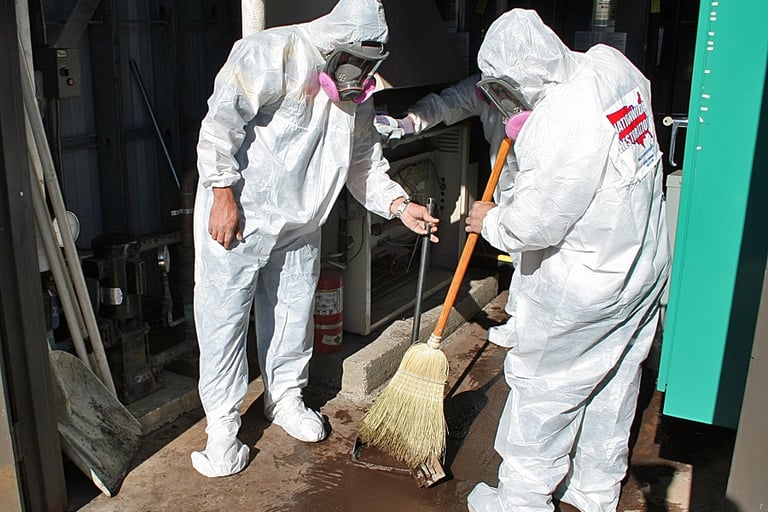

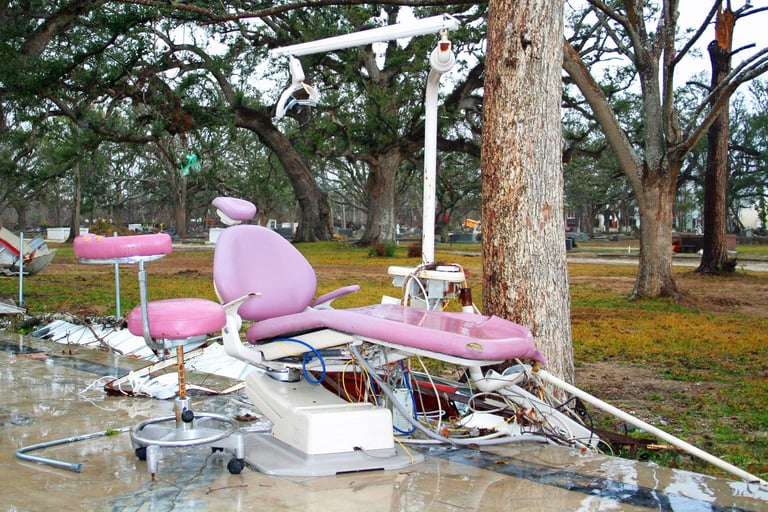





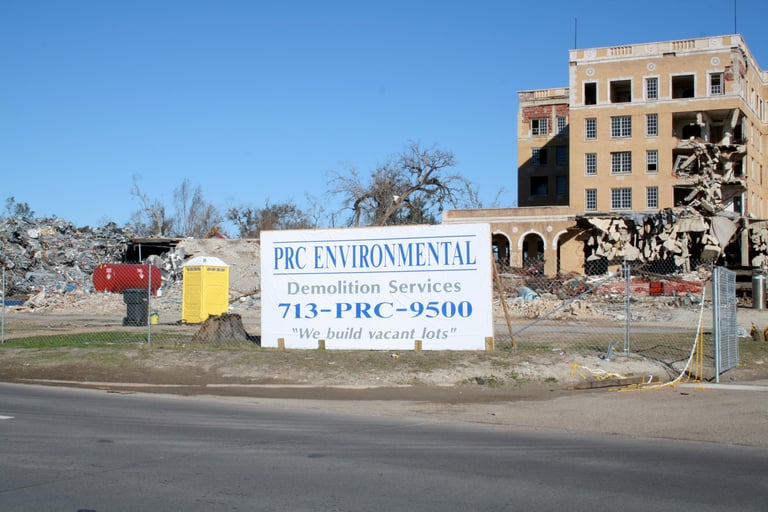



JANUARY, 2025 POSTS
January 9, 2025--Let’s talk about what climate scientists are calling the warming’s “Evil Twin.”
It’s difficult to believe that humans could screw up a body of water that contains an estimated 343 million trillion (343 quintillion gallons) of H₂0. But one should never underestimate our ingenuity.
As an example of this “ingenuity,” I offer the Great Pacific Garbage Patch. All the plastic we dutifully separate and put on the curb each week is recycled. Right? Wrong! The plastic industry would like us to believe that. But, according to Consumer Reports, only about nine percent is recycled. Much of the rest ends up in landfills or in The Pacific Trash Vortex, spanning the ocean from the West Coast to Japan—an estimated 617,000 square miles.
But on to the “Evil Twin.”
It’s been found that about 30 percent of the CO₂ in the atmosphere dissolves in the ocean. That might seem like a good thing—the ocean acting like a huge carbon sink taking C0₂ out of the air. But it seems that nothing comes without a price. Water and carbon dioxide combine to form carbonic acid (H2CO3). The ocean’s average pH (a measure of acidity) is now around 8.1 (which is alkaline). But as the ocean continues to absorb more CO2, the pH decreases, and the ocean becomes more acidic.
Marine scientists are calling ocean acidification the warming’s “Evil Twin.” It’s estimated that at the current rate of increase, the ocean will be 150 times more acidic than it is today by the end of the century. The impact on marine life is difficult to predict, but many species simply will not have the time or ability to adapt to the more acidic conditions.
And excess carbon is making freshwater lakes more acidic, too—at triple the rate of oceans.
Ocean acidification is already affecting many marine animals—organisms, for example, like shellfish and corals that make hard shells and skeletons. As acidification increases, these organisms will have difficulty building and maintaining their shells, skeletons and other structures. If the pH gets too low, shells and skeletons can even begin to dissolve.
So human generated CO2 isn’t the only negatively affecting terrestrial agriculture, causing drought and desertification, it is also reducing the ocean’s ability to serve as an alternative source of food.
Researchers have designated ocean acidification as one of nine planetary boundaries whose limits, if transgressed, could threaten civilization and life as we know it.
Meet The Warming's "Evil Twin"
2024 Warming Scorecard
January 13, 2025--This past year was a banner year in the history of our warming planet: 2024 was first year that the global mean temperature increase exceeded 1.5ᵒ C (2.7ᵒF) over the 1900 benchmark, the limit set at the Paris Climate Conference in 2015 as the target to allow us to dodge the worst the warming has to offer.
We’ve exceeded that limit in less than 10 years, partly because signatories to the agreement have failed to meet promised CO₂ reductions.
Total carbon dioxide emissions were projected to have been 41.6 billion tons in 2024, up from 40.6 billion in 2023. This includes fossil fuel CO₂ emissions of 37.4 billion, and the rest from land-use changes (i.e., deforestation), according to the Global Carbon Budget. The increase over 2023, also a record year, was almost one percent: 37 billion tons.
There is good news. The curve has been slowly flattening, reflecting some progress in CO₂ reduction. But, clearly, it has been insufficient to retard the warming’s development.
Meanwhile, mean atmospheric carbon dioxide concentrations reached a record high of 426 parts per million by the end of the year. This represents an increase of roughly 20 percent compared with average CO₂ levels recorded in 1990. In 2023, the global average annual CO₂ concentration reached a record 422 ppm.
These figures are significant because, historically, when the planet has exceeded 400 ppm of atmospheric carbon dioxide, conditions would have been less than desirable for human habitation. About 3-4 million years ago, for example, the Earth was so warm that horses and camels thrived in the Antarctic and the sea level was estimated to be 30 feet higher than today.
And, to round out the scorecard, 2024 was the hottest year on record—both globally and for the U.S.
These increasing temperatures contributed to 27 individual weather and climate disasters with at least $1 billion in damages in 2024, trailing only the record-setting 28 events in 2023.
This total places 2024 as the fourth costliest on record, trailing 2017 ($395.9 billion), 2005 ($268.5 billion) and 2022 ($183.6 billion). Adding the 27 events to the record that begins in 1980, the U.S. has sustained 403 weather and climate disasters for which the individual damage costs reached or exceeded $1 billion. The cumulative cost for these events exceeds an estimated $2.915 trillion.
One wonders at what point we’ll run out of money to devote to cleaning up after the increasing number of warming-related disasters?
Please! No More Pie-in-the-Sky
January 23, 2025—It’s amazing the length to which some people go to ignore the obvious—even “smart” people. A good example is the all the money being poured into efforts to develop technologies to remove carbon dioxide from the atmosphere.
This summer, Bill Gates huddled in London with representatives of some of the world’s wealthiest people, including the Amazon founder, Jeff Bezos, SoftBank founder, Masayoshi Son, and Prince al-Waleed bin Talal of Saudi Arabia.
They were evaluating their joint investments in companies that could help the world combat the warming. Among the businesses in their portfolio, four stood out as having a particularly audacious goal: They were working to strip carbon dioxide from the atmosphere, for a profit.
As countries around the world continue to pump planet-warming pollution into the skies (a record 37.4 billion tons in 2024), driving global temperatures to record levels, the financial world is racing to fund the emerging field of carbon dioxide removal, seeking both an environmental miracle and a financial windfall.
The technology, which did not exist until a few years ago, is still unproven at scale. Yet, it has an alluring appeal. Stripping away some of the carbon dioxide that is heating up the world would seem to make sense. And with a small but growing number of companies willing to pay for it, investors are jockeying to be first movers in what they believe will be a big industry necessary to help fight global warming.
The group assembled by Gates, known as Breakthrough Energy Ventures, is among the biggest backers of the more than 800 carbon removal companies that have been started in recent years. Other investors include Silicon Valley venture capitalists, private equity firms from Wall Street and major corporations like United Airlines.
There are a few dozen facilities operational today, including ones in Iceland and California. But the biggest of these capture only a sliver of the greenhouse gases humans produce in one day. Even if hundreds more such plants were built, they would not come close to counteracting even one percent of annual carbon dioxide emissions.
Pulling greenhouse gases out of the air is expensive. Today, it can cost as much as $1,000 per ton to capture and sequester carbon dioxide. Many analysts say the price would need to drop to around $100 a ton for the industry to take off.
According to critics, “This isn’t a market. A market means liquidity, repeatability, standards. We have none of that here.”
But at least for now, investors are eagerly funding new companies in the field, hoping that some of their bets pay off.
Former Vice President and Nobel-prize winner Al Gore is not a believer.
“Let’s not pretend that it’s going to become available within the time frame we need to reduce emissions,” Gore, a co-founder of Climate Trace, which maps global greenhouse gas emissions, says.
Last year a United Nations panel cast significant doubt on the industry’s ability to make a difference. “Engineering-based removal activities are technologically and economically unproven, especially at scale, and pose unknown environmental and social risks,” it said.
Critics also argue that carbon dioxide removal is a dangerous distraction that will perpetuate the behavior that is causing the climate crisis. The fact that CO₂ can be removed from the atmosphere might give some the idea that it’s okay to continue pump it right back. Some MAGA Republicans are already hinting that the technology can justify Trump’s aggressive pump and frack agenda.
As Mr. Spock would say: “That’s illogical.”
Instead, many scientists and activists say the most effective way to combat the warming is rapidly to phase out oil, gas and coal, the burning of which is heating the planet.
“We need to obey the first law of holes,” Gore said. “When you’re in one, stop digging.”
Pie-in-the-sky technological solutions are not going to save us from the worst the warming has to offer. Fact is, we’ve had the solutions—six of them—for decades. They are solar, wind, nuclear, hydro, thermal and tidal energy. Today they provide less than 30 percent of the world’s energy.
But in our thirst for cheap energy, we’ve chosen to go with carbon-based fuels. That decision is going to cost us.
DECEMBER, 2024 POSTS
December 16, 2024--With October's initial temperature data in, 2024 will rank as the first calendar year in modern recording keeping in which surface temperatures exceed the 2015 Paris Agreement's aspirational 1.5°C guardrail
Holding long-term warming to the 1.5ᵒ C target point compared to the preindustrial era is crucial for lowering the risk of triggering climate change tipping points, beyond which potentially catastrophic impacts have a higher likelihood of occurring.
Data—and proxy records such as tree rings and ice cores—show this year is likely to be the hottest in at least 125,000 years
Climate scientists are collectively scratching their heads trying to understand why The Warming is proceeding ahead of schedule. Whatever the reason(s), it's clear that human kind needs to focus now on ways to adapt/adjust to the coming climate apocalypse.
Planet Warming Faster Than Predicted
November 3, 2024--When it come to planning for the future of their families and future generations, I’m pretty sure America’s “.01 Percenters” have a substantial lead over the rest of us small, simple folk.
I’ve come to this conclusion based on some hard and fascinating data.
In the last decade, private land in the U.S. has become increasingly concentrated in the hands of a few. Today just 100 families own about 42 million acres of land across the country, a 65,000 square mile expanse about the size of Wisconsin. This according to Land Report, a magazine that tracks large land purchases.
The amount of land owned by these families has jumped 50 percent since 2007 and 20 of these 100 families each owns more than 500,000 acres.
Very few of these enormous tracts are located in areas whose long-term value is made questionable by the warming. Those owners who have gone on record claim their purchases were for investment purposes—hedges against volatile markets. They are well aware that, as a limited commodity, land is inherently valuable and will only become more so as the warming takes it away.
But one can’t help but wonder if consideration also isn’t being given to converting some of these huge estates to secure and self-supporting refuges for these mega-rich families and their offspring.
Douglas Rushkoff has come to the same conclusion. In his new book, Survival of the Richest: Escape Fantasies of the Tech Billionaires, he details the lengths to which the rich are trying to dodge the warming. For the wealthy and privileged, he says, the future of technology is about one thing: “escape from the rest of us.”
And the plan is to escape in style. Texas-based Rising S Company, for example, sells luxury “bunkers” that run up to $9.6 million for the “Aristocrat” model which comes with all the upscale amenities plus a bowling alley, swimming pool, bullet resistant doors and a “motor cave exist” suitable, I suppose, for sneaking the family out in the armored Bat-SUV for midnight snacks at McDonald’s.
Meanwhile, what will the simple folk do?
NOVEMBER, 2024 POSTS
November 15, 2024--Now that the guardrails have been removed, concerned folks are wondering what the dictator-in-waiting will actually do when he ascends his “throne” on January 20. In terms of environmental policy, there’s little mystery. One need only to look at his record following his “win” in 2016 and the platform put forth in the Heritage Foundation’s 1000-page Project 2025, Trump’s roadmap for destroying America as we’ve known it.
In 2017, Trump withdrew U.S. participation from the 2015 Paris climate agreement in which we joined 193 nations and the EU in—for the first time—setting standards to limit global greenhouse gas (GHG) emissions. He also charged his Environmental Protection (Destruction?) Agency with dismantling as many as possible of the Obama-era environmental programs designed to curb emissions.
Could we expect him to do less starting in 2025?
According to an analysis by the Center for American Progress: “…advocating for a ‘whole-of-government unwinding’ of U.S. climate policy, Project 2025 puts forward a vision that threatens global efforts to counter climate change effectively. Coupled with efforts to strip governmental civil service employees of labor protections so they can more easily be replaced with political loyalists, Project 2025’s policy agenda would trade the federal government’s vast institutional knowledge and forward momentum on climate solutions for dangerous climate denialism and obstructionism.
“…Project 2025’s policies would damage all aspects of U.S. international engagement, including climate cooperation among countries that are stepping up to the climate challenge, financing to help vulnerable communities around the world, national security measures to protect defense assets and geopolitical interests, and trade policies that center on workers and job creation. These harmful proposals are united by a common theme: an abdication of global climate leadership to the benefit of big oil and gas companies.”
All this, however, may be moot. A central thesis of my book—Surviving The Warming: Strategies for Americans—is that it is already too late to expect GHG reduction to save us from much of the worst the warming has to offer. While continuing these efforts is laudable and could help limit some of the long-term negative outcomes, the reality is that the warming is already baked in, irreversible. Data indicate we simply will not be able to keep the global average temperatures rise under 2.7ᵒ F by mid-next decade, the limit set by climate scientists as the tipping point after which the warming will have its way with us.
Instead, the book strongly suggests that people begin now to consider what needs to be done to prepare for this climate catastrophe. It will be too late if we wait until it is fully upon us.
Climate: What Can We Expect From Trump?
Who's Winning the Survival Game?
November 26, 2024—Imagine a temperature of 72ᵒ F. Pretty comfortable. Shirt sleeves weather.
Now imagine 72ᵒ F in Antarctica. That would be an incredible heat wave, encouraging more rapid melting of the continent’s enormous ice sheet--1.5 times the size of the U.S. This record-breaking temperate was recently reported at a summit of climate scientists held in Australia.
“Nowhere on Earth is there a greater cause of uncertainty in sea-level rise projections than from East Antarctica, in Australia’s backyard,” the researchers wrote. “The East Antarctic Ice Sheet alone holds enough water to raise global sea levels by approximately 50 meters [164 feet] if completely melted. Implications for our coastal cities and infrastructure are immense.”
The summit, officially called the 2024 Australian Antarctic Research Conference, was held in Hobart, Tasmania. Some 500 experts showed up to mull over the concerning reports and try and figure out a better way to sound the alarm so that the world really hears.
According to the research, Antarctica currently looses around 17 million tons of ice every hour on average, and that rate is increasing. “Satellite imagery suggests that Antarctica is losing ice more than six times faster than it was 30 years ago,” IFLScience wrote. “Even East Antarctica, once thought to be relatively stable and immune to change, is starting to show signs of extreme upset, such as heatwaves and huge melting events.”
“Efforts to slow down climate change through coordinated global action are paramount to protect the future of Australia, Antarctica, and our planet,” the researchers wrote. “…Our societies must set and meet targets to ‘bend the carbon curve’ as quickly as possible. Failure to rapidly reduce emissions – every year and every ton– commits actual and future generations to greater sea-level rise. Every fraction of a degree matters.”
Unfortunately, GHG emissions continue to go in the opposite direction. This year will see another in a string of unbroken records. CO₂ emissions are forecast to exceed 37.5 billion tons.
Bad News from Down Under
Hurricanes by the Numbers
November 27, 2024--Hurricanes caused over $1.3 trillion in damage in the United States last year. In all there were 28 billion dollar-plus weather events. These other events accounted for an estimated $93.1 billion in additional losses.
These figures include estimates of both physical damage and economic losses. But it’s difficult to know the true costs of hurricanes because, in most cases, figures quoted do not include that which was covered by private insurance—said to be about 40 percent. Nor do they consider other important categories including medical costs, uninsured losses, job and wages losses, crop losses, infrastructure damage, business and supply chain disruptions, evacuation and relocation costs, long-term tourism losses, travel delays and airport closures, and emergency management and government expenses.
In 2023, the Federal Emergency Management Agency (FEMA) responded to more than 100 disasters. Survivors received more than $1.3 billion to jumpstart their recoveries, with communities and states receiving nearly $12 billion to rebuild infrastructure damaged by disasters. Clearly, only a small portion of the estimated $1.3 trillion in damages was covered by FEMA.
The cost of hurricanes in 2023 is astonishing when compared to the total federal budget for that year-- $6.2 trillion (while collecting $4.4 trillion in taxes). Of course, the federal budget was not tapped for much of the costs of hurricane mediation. It might be more instructive to use the 2023 Gross Domestic Product (GDP) for comparison purposes. The GDP was $27 trillion. Thus, 2023 hurricane activity amounted to five percent ($1.35 trillion) of GDP.
Once all the figures are in, however, 2024 may top last year’s destruction and economic losses.
As the frequency and cost of hurricanes continues to climb, the country and its citizens will become increasingly hard pressed to pay the piper. Clearly, money will have to be diverted from meeting other necessary needs.
Southeast Pummeled by Frankenstorms
October 8, 2024--Hurricane Helene is an excellent example of the latest generation of mega-hurricanes—ones dubbed “Frankenstorms” after Sandy wreaked havoc in 24 states in 2012 after blowing up from the Central Caribbean, Jamaica, Cuba and the Bahamas to along the U.S. East Coast. Its highest storm surge was 14 feet, inundating lower Manhattan, knocking out the subway system and all but one tunnel. In all 285 were killed and there was over $75 billion in damage.
All the data isn’t in yet, but, as of this writing (10/7), Helene has logged 230 deaths with massive flooding and power outages affecting six states. Some are calling it the deadliest since Katrina, but Sandy’s death toll was substantially higher.
And Milton is now threatening much of the same seashore that Helene flattened, requiring many residents to evacuate a second time. Milton rapidly strengthened into a Cat 5 Hurricane Monday (10/7) in the Gulf of Mexico and took a path that threatened dangerous storm surges up and down the coast, leading to evacuation orders and long gas lines.
The storm crossed the peninsula as a Cat 3 and exit into the Atlantic after dumping prodigious amounts of rainfall on the state’s already saturated midsection.
Frankenstorms have varying histories, but all are similar in that they tend to cause more loss of life and damage inland than at point of entry.
Ida in 2021 is a prime example. The storm hit the Louisiana coast as a Cat 4 but quickly rolled inland. Remnants unleashed dangerous flash floods and tornadoes across the Northeast, including New York, New Jersey and Connecticut. Dozens of people died in the wake of flooding. All told, 95 deaths were attributed to the storm, most of them far inland.
The power and longevity of these storms is directly related to ever higher water temperatures in the Gulf. A hurricane can be spawned in water temperatures around 80ᵒ F. In recent years, summer and fall temperatures in the Gulf have ranged as high as the upper 90s and have expanded the hurricane “season” beyond its traditional end in late October.
In the Southeast and Deep South, living inland is no longer any protection from the ravages of these mega-hurricanes. And storms like Ida can bring death and destruction as far as the northeast. For many, escaping the warming’s mega storms, high heat and humidity will eventually require migration to safer and cooler climes.
Paradise Lost
October 8, 2024--Historic Asheville, NC was a city touted as a climate "haven"--a reputation deadly Hurricane Helene left in ruins. It appears that nowhere is safe.
Nestled in the bucolic Blue Ridge mountains of western North Carolina and far from any coast, Asheville was touted as a climate haven from extreme weather. Now the historic city has been devastated and cut off by Hurricane Helene’s catastrophic floodwaters in a stunning display of the climate crisis’s unlimited reach in the United States.
Nearly a third of the some 230 Helene-related deaths occurred in the county containing Asheville, a city of historic architecture where new residents have flocked amid boasts by real estate agents of a place that offers a reprieve from “crazy” extreme weather.
Now, major highways into Asheville have been severed by flooding from surging rainfall, its mud-caked and debris-strewn center turned into a place where access to cellphone reception, gasoline and food is scarce. The water supply, as well as the roads, is expected to be affected for weeks. It is, according to Roy Cooper, North Carolina’s governor, an “unprecedented tragedy”.
October 14, 2024—There are lots of good reasons not to vote for Donald Trump in November. From his public statements, for example, it’s clear he would throw democracy out the window and become our nation’s first dictator. And there are others—his racism, his misogyny, his criminality. The list could go on.
There is, however, another significant reason that gets a little less attention. His anti-environmentalism, in particular, his denial of the reality of and danger posed by The Warming.
One of his early statements on the subject made his position clear. Through one of his incessant tweets, he told us: “The concept of global warming was created by and for the Chinese in order to make U.S. manufacturing non-competitive.” (That was just one of the 30,000 verified lies he told the public while President.)
When he took office, one of his first moves was to renege on our greenhouse gas reduction commitment made at the 2015 Paris climate talks. He also charged what might have better have been called his “Environmental Destruction Agency” to cancel as many of the Obama-era environmental policies as possible—to repay his corporate and billionaire supporters.
If elected, he would do the same with President Biden’s successful efforts to begin building a green economy, one that candidate Kamela Harris has vowed to pursue.
Another of Many Good Reasons Not to Vote for Trump
October 23, 2024--When it comes to predicting the course of The Warming, unanticipated consequences play a major role.
A recent discovery explains, in part, why the climate crisis seems to be accelerating faster than had been predicted. Huge quantities of CO2 and methane gasses are being release by the rapidly melting Arctic and Siberian tundra. It’s estimated that four times as much CO2 is locked in the tundra than has ever been emitted by humans. The phenomenon had not been considered in earlier modeling.
A major contributor to this outgassing is the planet’s temperature 3-4 million years ago before the last Ice Age when it was substantially warmer—warmer to the point that the Arctic region was lush, green and supported wildlife including camels and horses. At the time parts-per-million (ppm) of CO2 in the atmosphere exceeded 400, just as it does today, and the global average temperature was 6ᵒ F warmer and the oceans 30 feet higher than at present.
Permafrost is the carbon-rich frozen soil that covers nearly a quarter of the Northern Hemisphere. It encompasses huge swathes of territory across Siberia, Alaska, Greenland and Canada. These frozen Arctic soils are thought to contain some 1,700 billion tons of organic carbon, which can be converted into CO2 and methane by microbes in soil. These microbes become more populous as temperatures warm. As a result, melting permafrost across the world’s northerly climates could release twice much greenhouse gases as are already in the atmosphere.
Recent studies suggest that by the year 2100, defrosting tundra could spew as much as 524 billion tons of stored carbon into the atmosphere. How much is emitted depends on the rate of warming. Given the expected increase in CO2 releases and their potential to further warm Earth’s climate, “you could say this is a doom scenario,” one researcher said.
As we strive to reduce human greenhouse gas emissions, the planet seems to be in the process of overriding our efforts.
Mother Nature's Revenge?
Really Bad Science Fiction
October 23, 2024—As The Warming continues to warm, you can sense desperation by the number of crack-pot ideas being suggested as
a solution. The sense of desperation becomes even more profound when the crackpots are scientists.
This is one of those stories that, at the end, should lead one to say: “Are you kidding me?”
So, here’s this “hypothetical” approach. A study published in the journal Geophysical Research Letters suggests that injecting about five million tons of diamond dust into the atmosphere would be enough to cool our planet by nearly 2.9ᵒ F.
Sure, it would take 45 years of nonstop injections and cost nearly $200 trillion—but the intervention would be enough, it’s claimed, to keep the planet close to the 2.7ᵒ F warming threshold past which the catastrophic effects of climate change are believed to be irreversible. (Actually this predicted doomsday is 2037).
Sound like bad science fiction? That’s the ironic part. It’s not meant to be science fiction. Actually, a good science fiction writer would never propose such an idea. It lacks the plausibility upon which good sci-fi is based.
Now, I’m not going to take too much of my time—or yours—by digging too deeply into the weeds. But here are just a few of the problems with the idea, beyond the obvious “where’s the money” going to come from? Oh, and how would we deal with the skyrocketing cost of wedding diamonds if they’re all being ground up and shot into space?
· To stay aloft the diamond dust would have to be “infused” into low Earth orbit (100-1,000 miles up) where all our satellites play. What kind of mayhem would that cause? If the cloud is not in proper orbit, the dust would gradually fall to Earth. Would that make the planet look like a big, sparkly Christmas ornament from space?
· The diamond cloud would have to be evenly diffused. Not an easy task. Otherwise, holes in the cloud would let the sunshine through.
· Then, of course, the diamonds—even as dust—are multi-faceted. In other words, the cloud would reflect both up and down. Heat would still reach the planet’s surface, some of which to be reflected skyward, but the underside of the cloud would bounce it back increasing the planetary temperature
· Getting bored yet? Just one more. If the layer is too thick, the planet may over cool and suffer, not from global warming, but global cooling.
Luckily the proposal was termed “hypothetical.” Actually, if it had been released in April, I would have taken it for an April Fool’s joke.
OCTOBER, 2024 POSTS